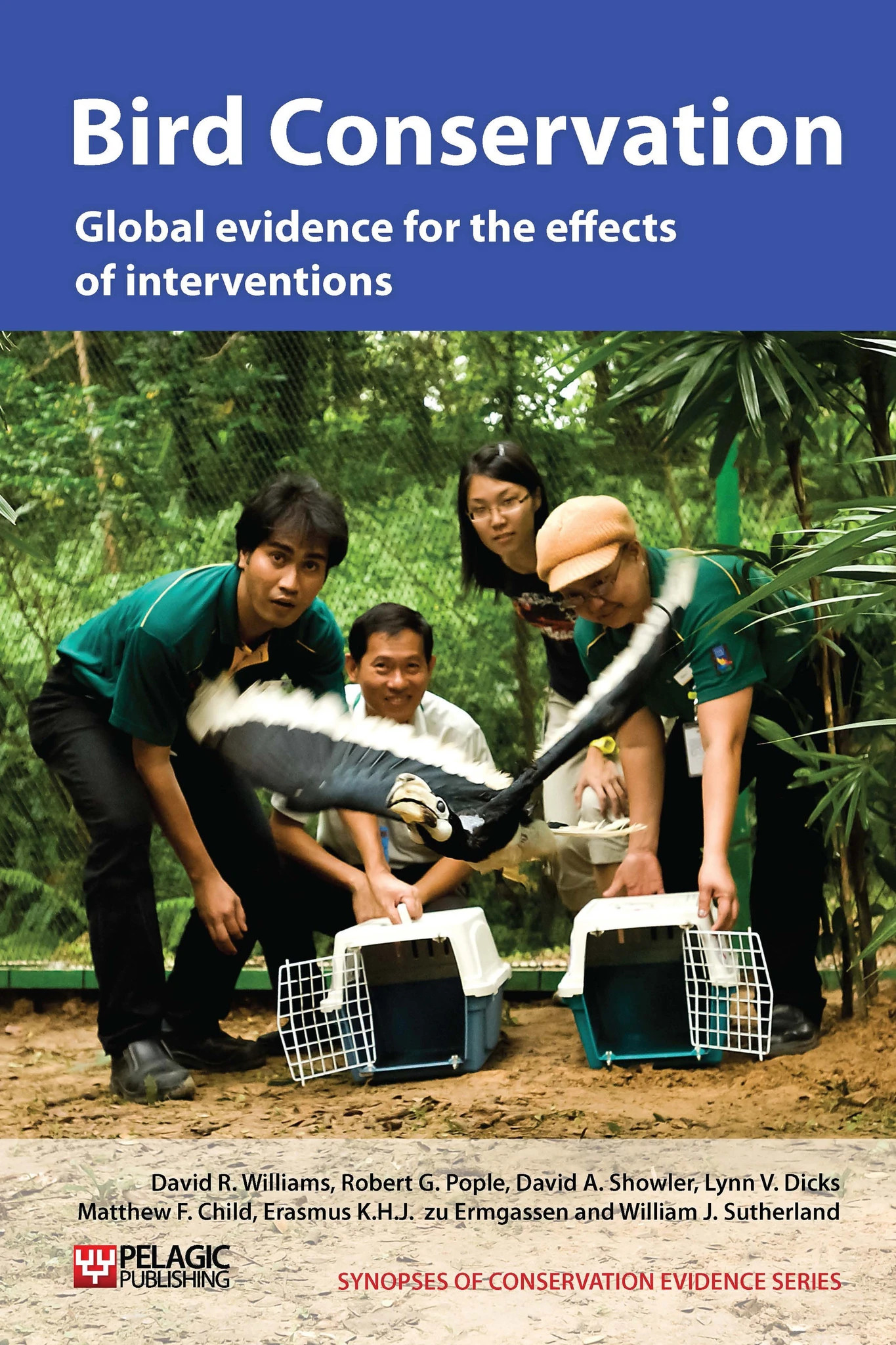Translocate parrots
-
Overall effectiveness category Likely to be beneficial
-
Number of studies: 7
View assessment score
Hide assessment score
How is the evidence assessed?
-
Effectiveness
50% -
Certainty
60% -
Harms
10%
Study locations
Supporting evidence from individual studies
A replicated 1994 study on four off-shore islands in New Zealand (Lloyd & Powlesland 1994) found that survival of translocated kakapos Strigops habroptila was high (63-85% until 1992, see Clout & Merton 1995 for details). However, reproduction was extremely low, with only two young reared to independence and a third hand-reared in captivity. Between 1974 and 1992, 65 kakapo were translocated from Stewart Island (1,746 km2, South Island) to Maud Island (300 ha, South Island; 1974-81: nine birds; 1989-91; six birds), Little Barrier Island (3,055 ha; 1982: 22 birds), Codfish Island (1,480 ha; 1987-92: 30 birds) and Mana Island (217 ha; 1992: two males). Translocations occurred because kakapos were suffering extremely high mortality rates due to predation by introduced mammalian predators (particularly cats Felis catus and stoats Mustela erminea) on Stewart Island. Such predators were removed from target islands prior to translocations.
Study and other actions testedA replicated study in southeastern Arizona, USA (Snyder et al. 1994), reintroduced 88 thick-billed parrots Rhynchopsitta pachyrhyncha into the Chiricahua Mountains between September 1986 and September 1993. Survival two months after release was significantly higher for wild birds caught as adults, compared to parrots caught as juveniles or captive-bred birds, either parent- or hand-reared (6.3% survival for 16 captive-bred, parent-reared birds vs. 0% for four hand-reared birds, 0% for four wild birds caught at juveniles and 43% for 65 wild birds caught as adults). Translocated birds were known to fly more than 110 km away from the release site, with small groups returning each autumn to the Chiricahua Mountains, where at least one pair producing two fledglings. This study is also discussed in ‘Release captive-bred individuals’ and ‘Use holding pens at release sites’.
Study and other actions testedA before-and-after study in 1992-4 on Hiva, Marquesas Islands, French Polynesia (Kuehler et al. 1997), found 14 ultramarine lorikeets Vini ultramarina on the island following the translocation of 13 birds from Ua Huka between August 1992 and November 1993. There were also anecdotal reports of juvenile lorikeets being present. This translocation programme is discussed in more detail below.
Study and other actions testedA second before-and-after study in January 1997 (Lieberman et al. 1997) assessed the same population of ultramarine lorikeets Vini ultramarina on Fatu Hiva, Marquesas Islands, French Polynesia as discussed in Kuehler et al. 1997, after the translocation of 29 individuals from Ua Huka Island between 1992 and 1994. The introduced population on Fatu Hiva was estimated at 51 individuals. The initial 29 translocated individuals were captured with mist nests, ringed, weighed, and measured before being kept up to seven days in captivity, while further captures took place. The authors identify the absence of black rats Rattus rattus and the location of Fatu Hiva within the lorikeet’s former range as key considerations in its selection as a release site.
Study and other actions testedA 1998 review (Clout & Merton 1998) of the kakapo Strigops habroptilus translocation programme described in Lloyd & Powlesland 1994 stated that yearly survival rates of 61 kakapo was around 98% following their translocation from Stewart Island to four other offshore islands. In 1997, at least 48 translocated birds (78%) were known to be alive. Productivity of translocated kakapo has been low, with high rates of egg infertility (approximately 40%) and nestling mortality. The population in February 1998 was 57 individuals, approximately 10% fewer than in 1982, when translocations began in earnest.
Study and other actions testedA small study (Oehler et al. 2001) following the translocation of 14 blue-and-gold macaws Ara ararauna from Guyana to their former range in Trinidad found that 11 macaws were observed within 51 km of the release site between three and eight months after release, with several travelling in pairs. One individual did not leave the release site and was recaptured. Translocated macaws were tested for papillomavirus, psittacosis, Newcastle’s disease, and avian influenza before transport and provided with supplementary food immediately after release.
Study and other actions testedA before-and-after study of a 2008-9 translocation programme for red-fronted parakeet Cyanoramphus novaezelandiae in North Island, New Zealand (Ortiz-Catedral & Brunton 2010), found that at least 41% of 32 parakeets translocated to Motuihe Island from Little Barrier Island in 2008 survived at least 60 days after release, with at least two family groups and four juveniles being identified eight months after release. In addition, birds have dispersed to other nearby islands and have bred on them. A further 18 birds were released in 2009, but were not monitored. One bird translocated in 2008 died before release due to trauma and disease, and one female caught in 2009 was very weak and was therefore returned to Little Barrier Island without being released. It is not clear how the other birds died (or if they were just not seen during surveys). Parakeets were caught using mist nets and held in aviaries on Little Barrier Island for up to six days before transport to Motuihe Island by helicopter. Birds were supplied with fruit, water and grains in excess and released immediately upon arrival at a forest fragment on Motuihe.
Study and other actions tested
Where has this evidence come from?
List of journals searched by synopsis
All the journals searched for all synopses
This Action forms part of the Action Synopsis:
Bird Conservation
Bird Conservation - Published 2013
Bird Synopsis





)_2023.JPG)














